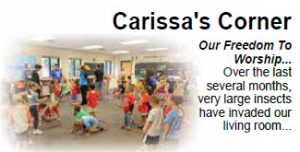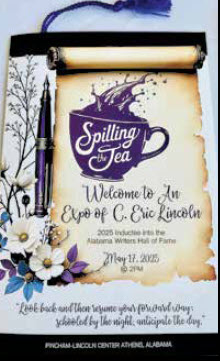 By: Ali Elizabeth Turner
By: Ali Elizabeth Turner
Two days ago, I heard an inspiring interview on Right Side Radio, a talk show which is hosted by Phil Williams, and it made me want to cheer. The people being interviewed were from the ELM Foundation, and their approach to providing interested charitable organizations as well as “participants” what they call “a path to sustainability” was refreshing, to say the least.
Founded in 2012 by retired intel officer John Nolan and his wife Helen, the ELM Foundation (which stands for Expect Little Miracles) works from the premise that when you combine grit with grace, you can do just about anything. Their goals are lofty, such as ending generational poverty, and their results are impressive: 300 clients in 10 years, a network of charitable organizations that actually work together and avoid overlap, and the use of a software program called Charity Tracker that records outcomes that are specific, achievable, measurable, accountability based, and require the participant to become a giver and not just a taker.
So, what is this “grit-and-grace” stuff? Well, anyone who has worked amongst the needy will tell you that if there is no accountability, no requirement to step through a process of becoming self-sufficient, and there is a seemingly never-ending pile of cash, people have no need to change, so they don’t. They just learn to work the system, work you, and stay dependent while they manipulate everyone in their sphere.
But there is good news! When you combine grace and help to develop grit and resiliency, people can and do head toward wholeness, and then help others to do the same. A marker of success, whether it is for the participant, the participating charity, or both is being able to go from being asked, “How may we help you?” to “How may we help you not need us anymore?”
There is an extensive interview process for both participants as well as charities that want to improve their outcomes, and the “pathway to sustainability” is broken down into manageable steps so that organizations can focus on their mission, collaborate to leverage resources, track outcomes, and strengthen organizations and the community.
The success stories prove that “the path” works. John Nolan told of a young African-now-American woman who was living in her car and was ultimately able to get her degree in accounting. She is working for a national wealth management firm at their branch office in Boston. Another woman had been brought here to enter into an arranged and ultimately violent marriage, and eventually she and her son were thrown out on the street, literally. Today she has earned her RN degree, and is a homeowner. Her son is in medical school.
The Path to Sustainability has five stages:
Crisis – this can be whatever brings the person to the end of themselves and their situation, and inspires them to seek genuine change
Transition – through being held accountable and working with someone who can craft a plan for their next steps, the participant moves into the beginning stages of self-sufficiency, such as achieving part-time employment and safe housing
Stability – steady employment and housing is now permanent, and pursuing further education may be in the mix. Bills are paid on time, and debt is starting to be reduced
Growth – has permanent employment with benefits and opportunities to advance, may become a homeowner or an entrepreneur, can provide needs and perhaps some wants
Abundance – becomes self-reliant, working toward wealth building or retirement, mentors others, and most importantly, has peace of mind
The ELM Foundation has a proven track record, and is looking for participants, volunteers, and charitable organizations to increase its reach. If this is something that gives you hope for change, either for yourself or your community, it’s time to be “grafted” into the ELM, where you can truly expect little miracles. For more information, go to https://www.elmhsv.org.










 June 20, 2025
June 20, 2025



